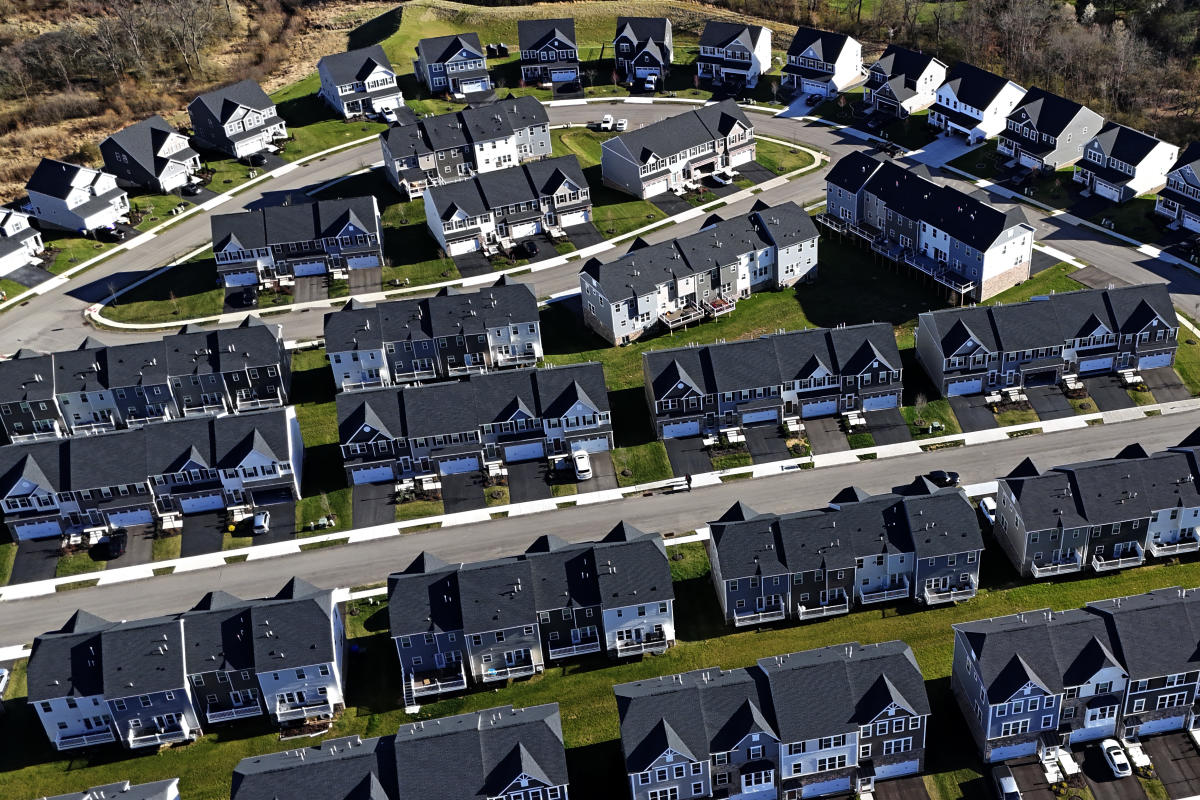LOS ANGELES (AP) — The housing market is showing little sign of recovery after a disappointing spring and bleak outlook for summer and fall.
Homebuyers entered 2024 optimistic that mortgage rates would fall further after a dip late last year. But those hopes faded as stronger-than-expected data on inflation and the economy clouded the timing of a potential rate cut by the Federal Reserve.
In April, the average rate on a 30-year mortgage rose above 7% for the first time since November. That, plus record-high home prices, has forced many potential homebuyers to postpone their house hunts — some indefinitely.
Economists predict mortgage rates will fall slightly toward the end of the year. But a small drop in rates may not be enough to entice homebuyers and convince homeowners that it’s a good time to sell.
Below is an overview of the key trends behind the housing market so far this year and what home buyers and sellers can expect in the second half of 2024:
The spring home buying season was another bust.
On average, more than a third of all homes sold in a given year are purchased between March and June. This is known as the spring home buying season, and it has been a downer in recent years.
Previously occupied home sales in the U.S. fell in the March-June period from a year earlier in 2022 and 2023. Sales fell in March, April and May of this year, and there are indications of a decline in June as well.
The weak spring sales figures reflect the affordability issues facing many homebuyers: the average interest rate on a 30-year mortgage is around 7%, the supply of homes for sale is at a historic low and home prices are at record highs.
High interest rates scare off home buyers
According to mortgage buyer Freddie Mac, the average rate for a 30-year mortgage is 6.95%, more than double what it was in early July 2021.
Mortgage rates are influenced by several factors, including the bond market’s reaction to the Fed’s interest rate policy and the movement in the 10-year Treasury yield, which lenders use as a guide in setting mortgage prices.
The 10-year yield, which hit 4.7% in late April, has fallen sharply recently after economic data showed slower growth. That could help keep inflationary pressures in check and convince the Fed to cut the key interest rate, which is at its highest level in more than 20 years.
Fed officials said in June that inflation had moved closer to the 2% target level in recent months and signaled they expected to cut the key interest rate once this year.
Still, economists predict that the average interest rate on a 30-year mortgage will remain above 6%.
Not enough houses for sale
Another obstacle for home buyers is the historically low supply of homes on the market.
The good news: The number of homes on the market at the end of May was the highest since August 2022, a trend that bodes well for homebuyers this summer. The bad news: The supply of homes for sale nationwide is still well below pre-pandemic levels.
Before the COVID-19 crisis, the supply of homes for sale in the U.S. was limited, as new home construction had been below average for more than a decade and as homeowners were staying in their homes longer due to demographic trends.
The large difference between current mortgage rates and the level of three years ago (3%) has also prevented many homeowners who had secured an extremely low interest rate from selling their homes. Real estate experts call this the ‘lock-in’ effect.
The price is not right
The national median sales price of a previously occupied home rose 5.8% in May from a year earlier to $419,300, a record high dating back to 1999, according to the National Association of Realtors. It’s also up 51% from just five years ago.
But price increases are slowing. CoreLogic’s home price index shows U.S. home prices rose 4.9% year-over-year in May, the smallest increase since October. The real estate data tracker predicts national home price growth will slow to 3% in May of next year.
“The rise in mortgage rates this spring caused a decrease in homebuyer demand and prices,” said Selma Hepp, chief economist at CoreLogic.
Home prices are falling as more homes sit on the market longer. Metro areas in Florida, Texas, Georgia and other states that have seen increased home construction in recent years have also seen a slowdown in price growth.
Some economists fear that a modest drop in mortgage rates without an increase in the number of homes on the market could actually hurt buyers struggling to afford homes, as sellers may be tempted to raise their asking prices.
“I’m a little concerned about what’s going to happen to home prices if rates come down, because I think it would stimulate demand without really stimulating supply, at least in the short term,” said Daryl Fairweather, chief economist at Redfin. “That could lead to a pretty big price increase.”
Should anyone buy now?
Home buyers who can afford to purchase a home now can take advantage of the increased supply of homes on the market.
People who can afford to pay for everything in cash may also want to buy on a short-term basis.
“Prices have gone up and are unlikely to go down, so there’s really no reason to wait unless you wait for rates to come down,” Redfin’s Fairweather said.
